Making Peach Preserves to Bring Eternal Summer onto Golden Glow
Eat peaches now, or turn them into peach preserves to bring sweet summer memories to wintertime on the boat? (reminds me of Philip Zimbardo’s experiment about the benefits of deferring gratification).
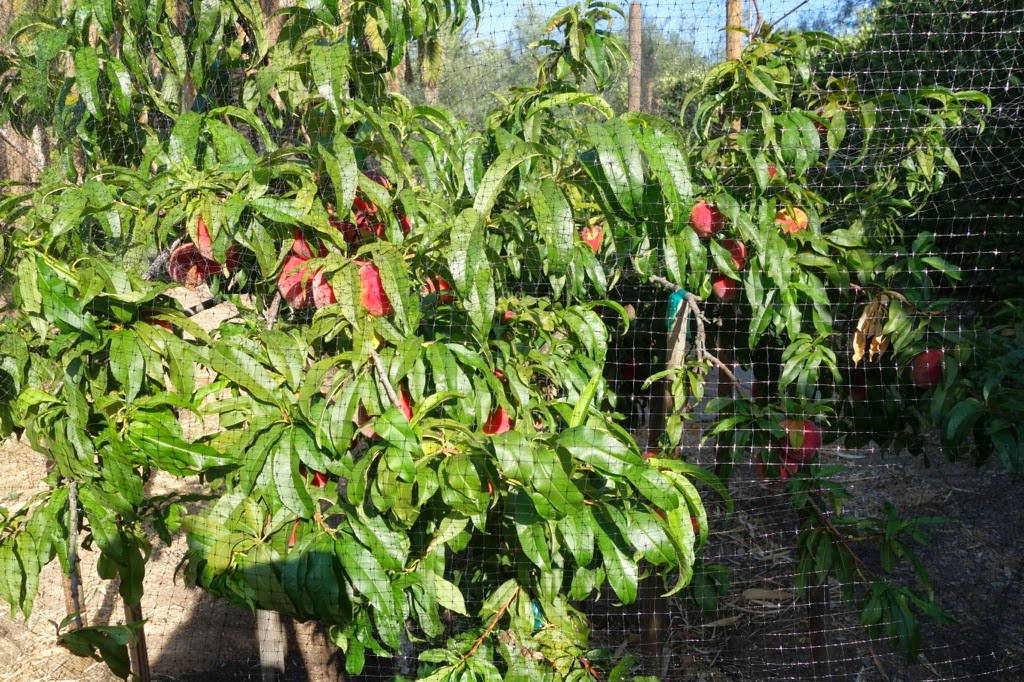 |
| we grow our yellow peach trees organically (the netting keeps the birds off the ripe fruit) |
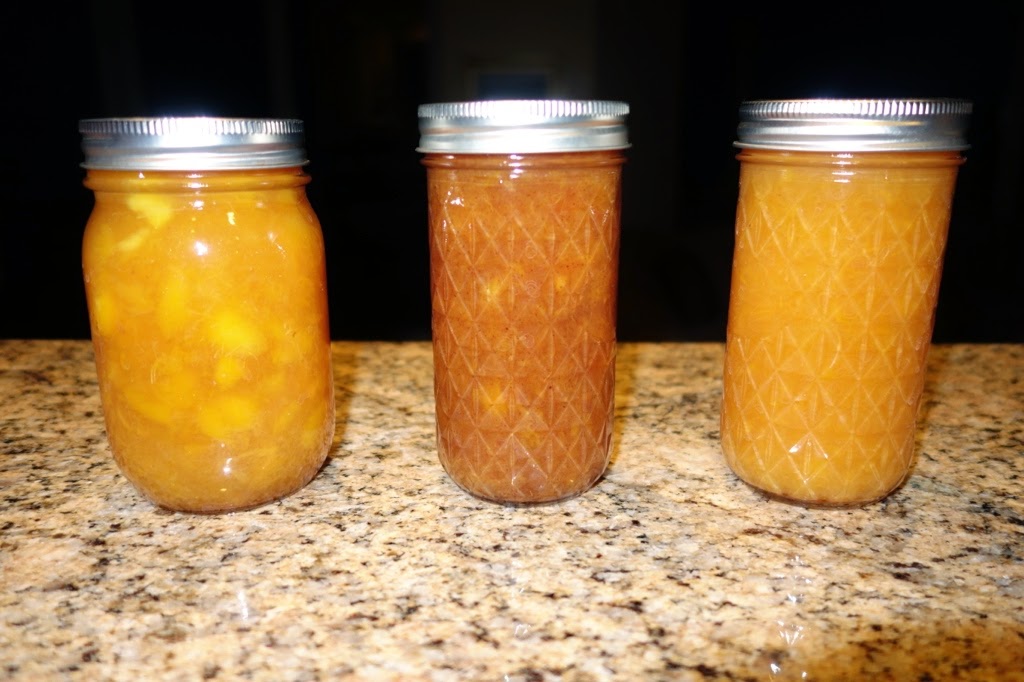 |
Fortunately, we’ve had a bumper crop of the sweet stone fruit this year, so I can use many delicious yellow peaches from our fruit trees and make peach jam. My plan is to stock Golden Glow with jars and jars of preserves for crossings or other times when fresh fruit isn’t available.
I made three different types of preserves. The left-most is traditional peach preserves. The middle is a spiced jam (with allspice and cinnamon). The one on the right is low-sugar using a special low-sugar pectin.
Here, I’m going to show you the steps for making traditional, old-fashioned peach preserves. With a simple overview, I’ll show you how I hot pack, then water bath can with boiling water. If you’re a novice canner, I suggest you read this primer on canning.
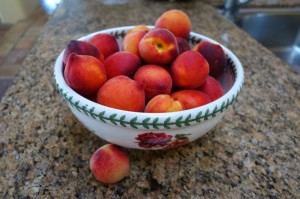 Most important is to start with the freshest and ripest peaches you can get your hands on. To ensure I use the ripest fruits, I “fondle” them as they begin to ripen, and pick only the ones that are truly ripe and ready to eat. The test for ripeness if if the juice runs down from your hand to your elbow! We grow ours organically, which allows us to eat them right off the tree if we want to.
Most important is to start with the freshest and ripest peaches you can get your hands on. To ensure I use the ripest fruits, I “fondle” them as they begin to ripen, and pick only the ones that are truly ripe and ready to eat. The test for ripeness if if the juice runs down from your hand to your elbow! We grow ours organically, which allows us to eat them right off the tree if we want to.
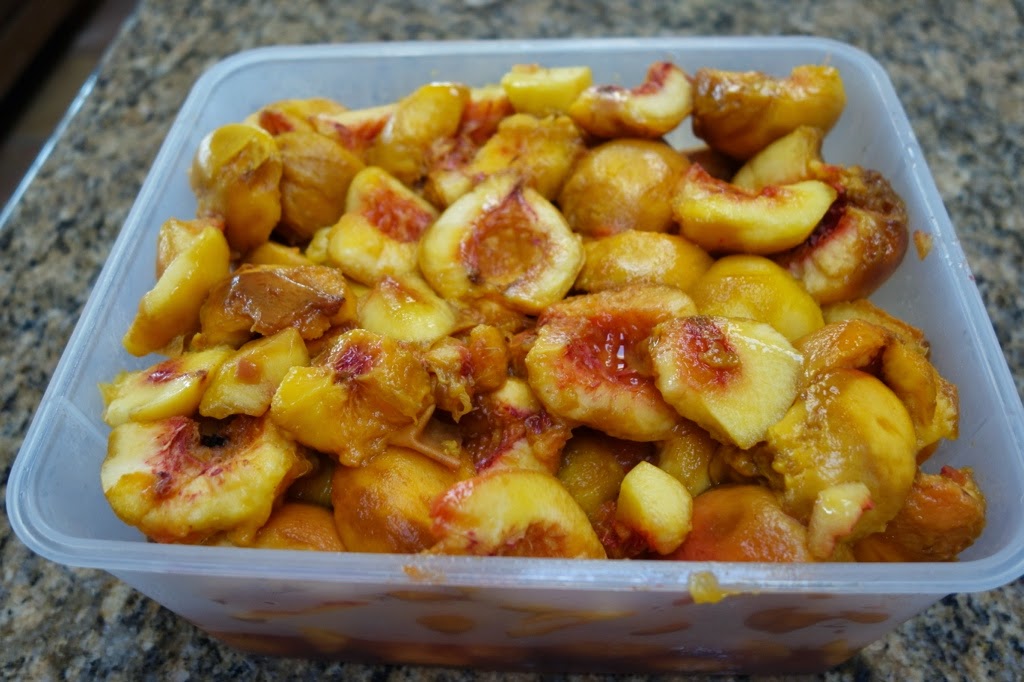
The first step is to peel the peaches, which is easily done by submerging them for 15-30 seconds in boiling water, then plunging them immediately in an ice-water bath. The skin slips off readily afterwards if they are ripe. Then, I slice them and remove the pits.
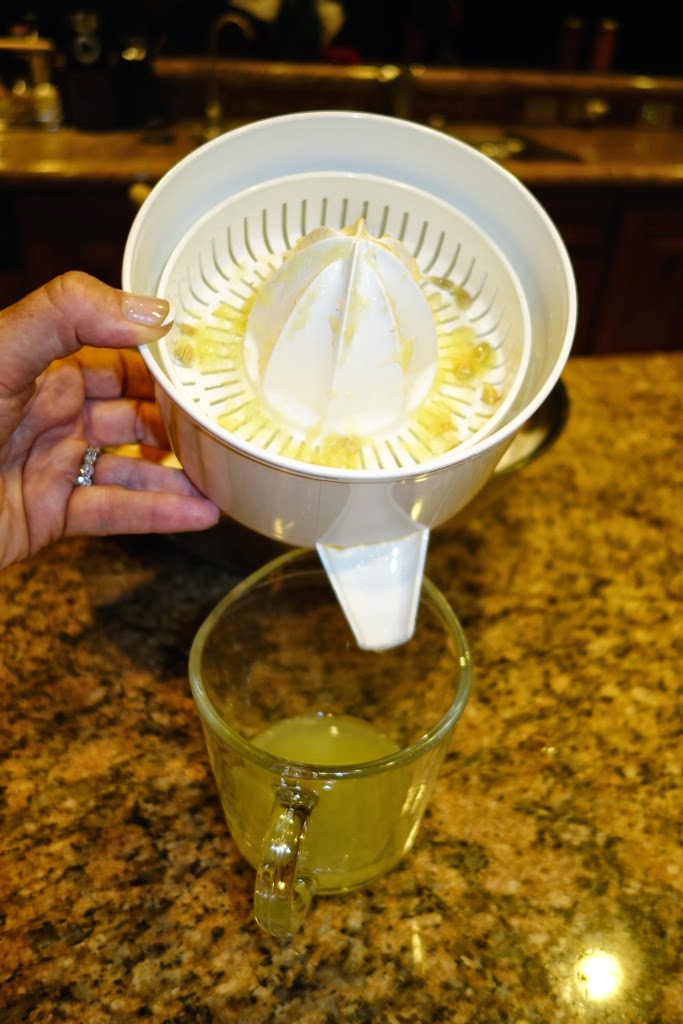 Next, I put 2 cups sugar and 1/4 cup freshly squeezed lemon juice on top of every 4 pounds of peaches (about 7 cups).
Next, I put 2 cups sugar and 1/4 cup freshly squeezed lemon juice on top of every 4 pounds of peaches (about 7 cups). 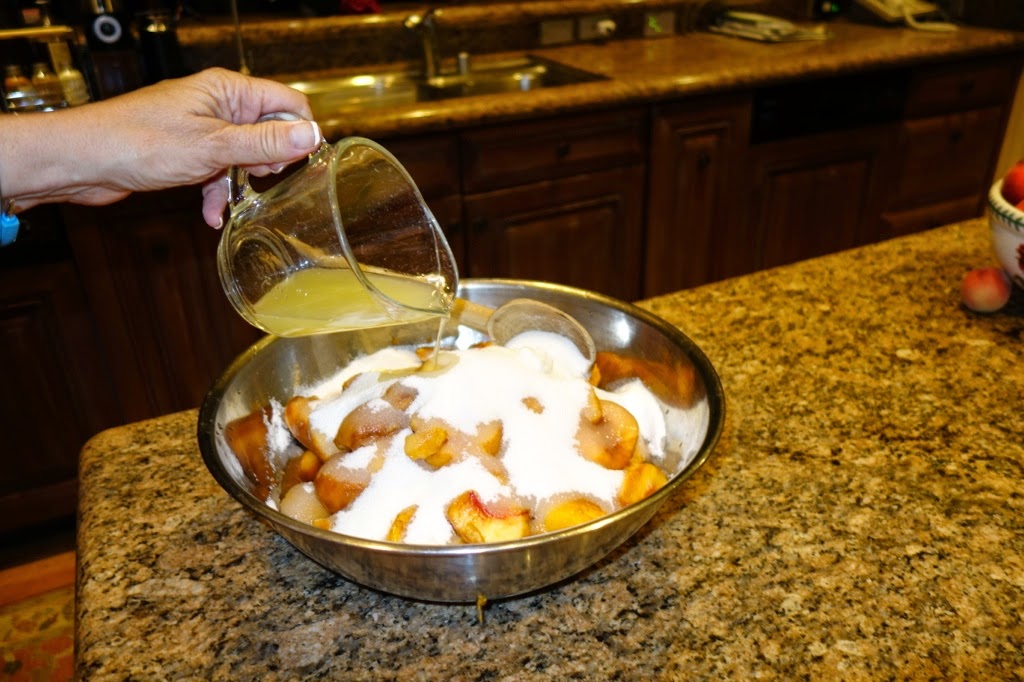 It’s best not to stir the sugar and lemon in, but just let it sit on top of the peaches.
It’s best not to stir the sugar and lemon in, but just let it sit on top of the peaches.This helps the peaches release their natural juices.

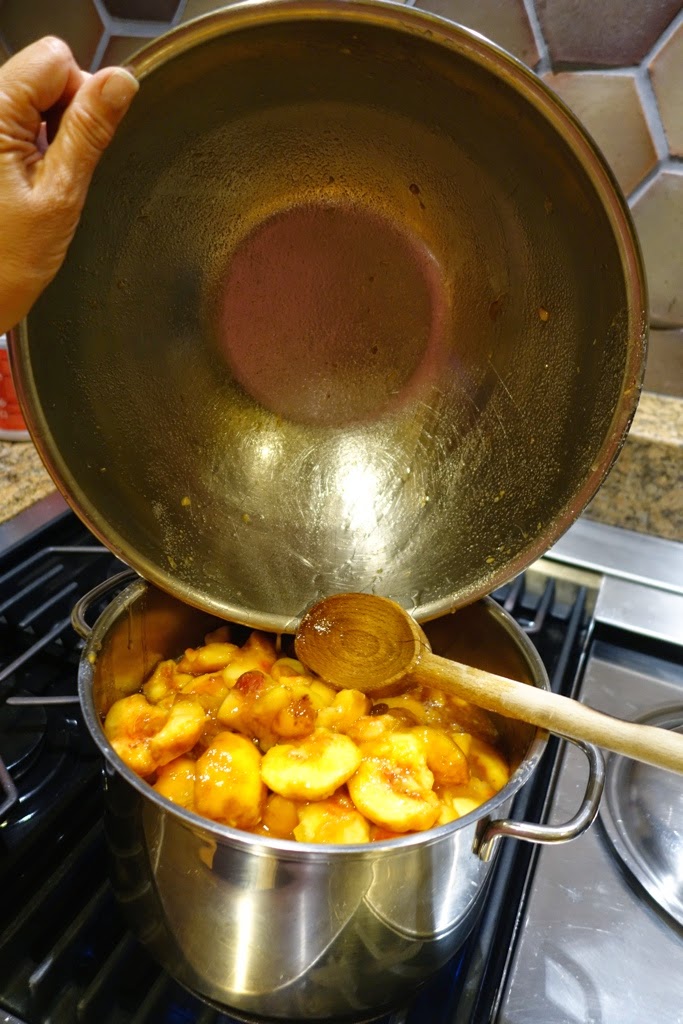 |
| what the peaches look like before cooking |
One trick I use is put my well-used heat diffuser under the pot. If you’re cooking on propane, it’s a bit harder to regulate the heat compared to natural gas, and the diffuser helps prevent uneven heating. I still stir constantly with a wooden spoon to be sure there is no scorching or burning of the peaches, and because of the diffuser, I never have a problem with that.
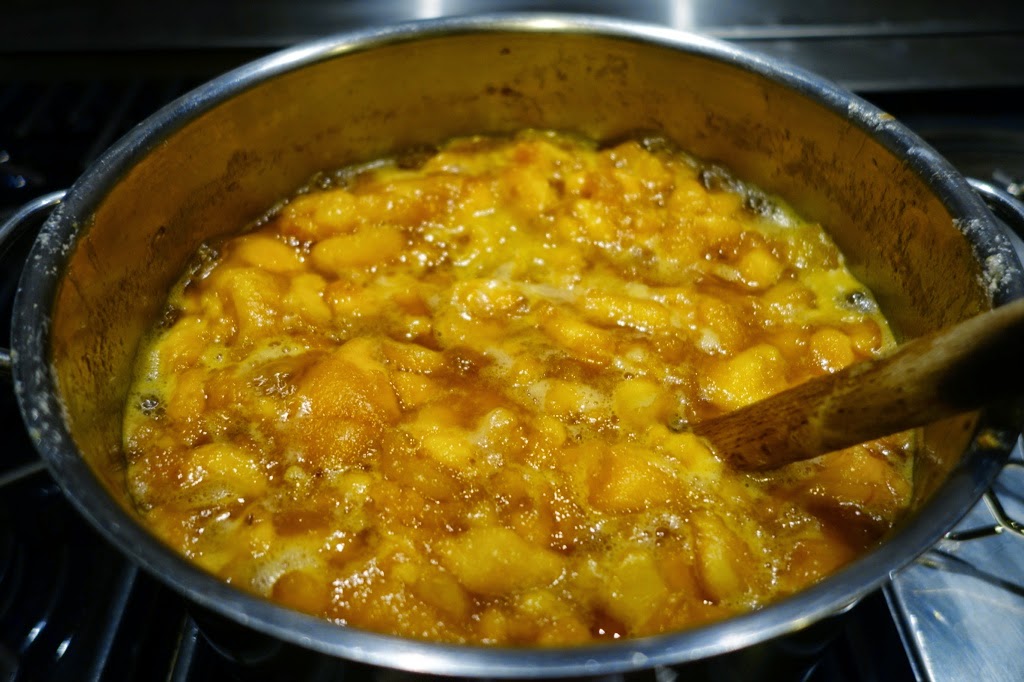 |
|
| well-cooked jam, ready to can |
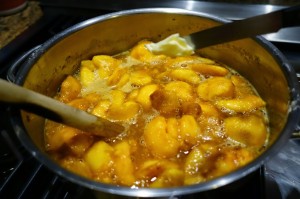
I cut my peaches as they’re cooking if I feel they are not reducing down to being bite-sized
While I’m cooking the peaches, I put the lids and rings in hot (not boiling) water
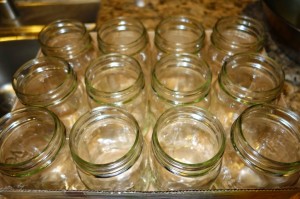
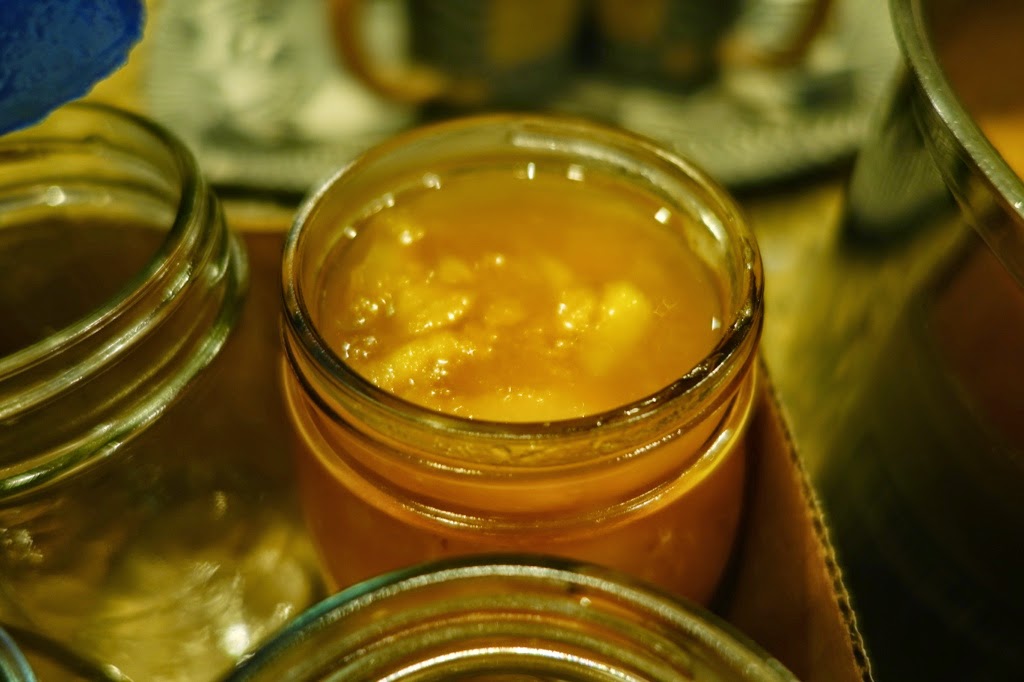 until the jar is filled to approximately 1/4″ from the top
until the jar is filled to approximately 1/4″ from the top 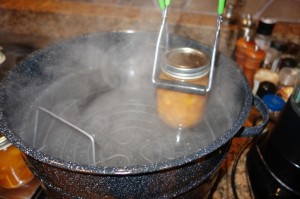 After putting on the rings and rings on the jars, they go into the hot water bath in the canner – making sure the water is at least two inches over their tops.
After putting on the rings and rings on the jars, they go into the hot water bath in the canner – making sure the water is at least two inches over their tops.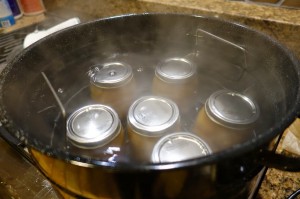
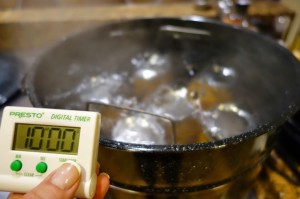
The reward ~ homemade yogurt topped with fresh peaches and freshly-made peach jam!
Some of the tools I used that are very useful:
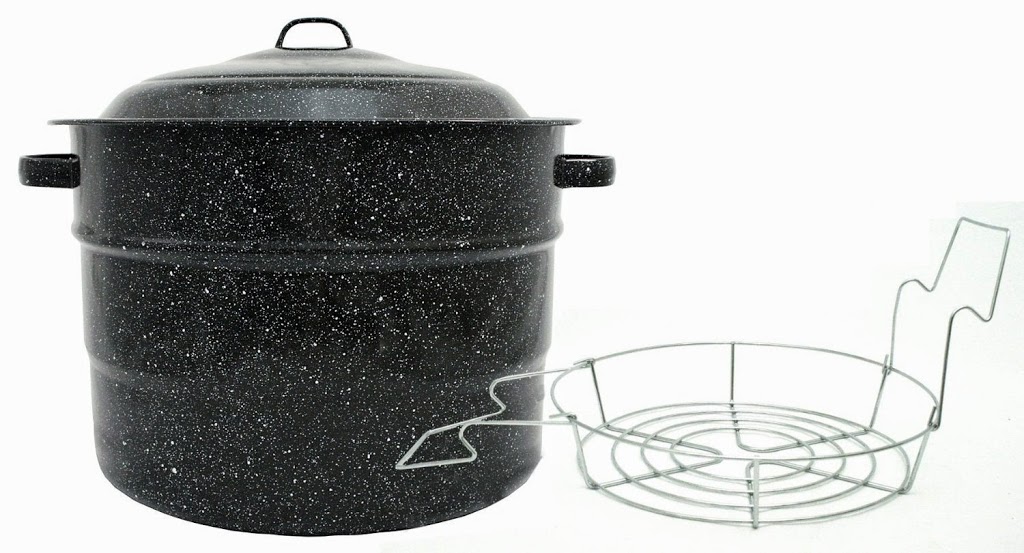 Large canner http://www.amazon.com/gp/product/B0001UZL8A/ref=oh_details_o05_s00_i00?ie=UTF8&psc=1
Large canner http://www.amazon.com/gp/product/B0001UZL8A/ref=oh_details_o05_s00_i00?ie=UTF8&psc=1
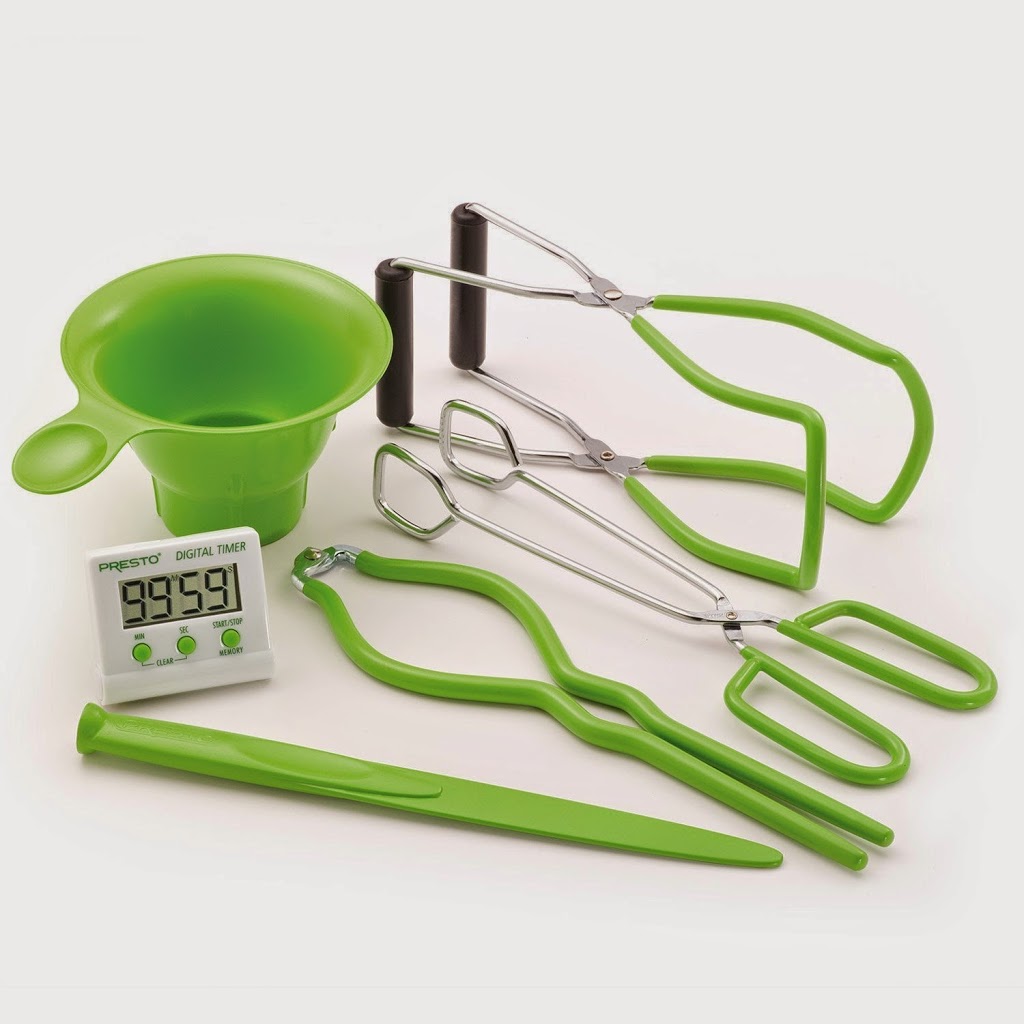
Canning tools http://www.amazon.com/gp/product/B001V9K8A6/ref=oh_details_o05_s01_i00?ie=UTF8&psc=1
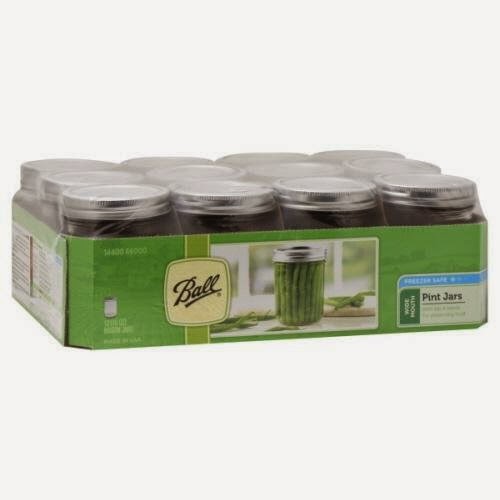
Ball jars with lids and rings http://www.amazon.com/gp/product/B001DIZ1NO/ref=oh_details_o04_s01_i00?ie=UTF8&psc=1
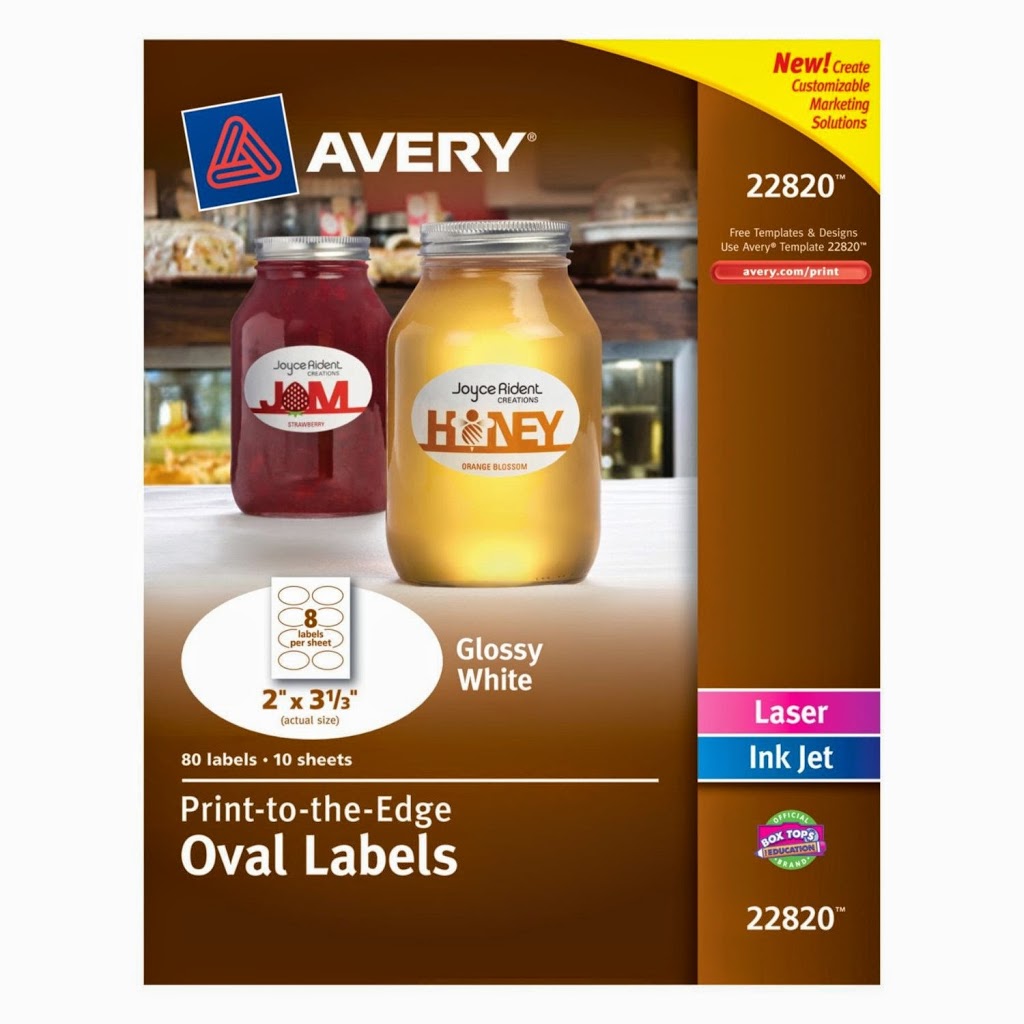 Labels you can print on, to go on jars http://www.amazon.com/gp/product/B008FKRXAC/ref=oh_details_o04_s00_i01?ie=UTF8&psc=1
Labels you can print on, to go on jars http://www.amazon.com/gp/product/B008FKRXAC/ref=oh_details_o04_s00_i01?ie=UTF8&psc=1
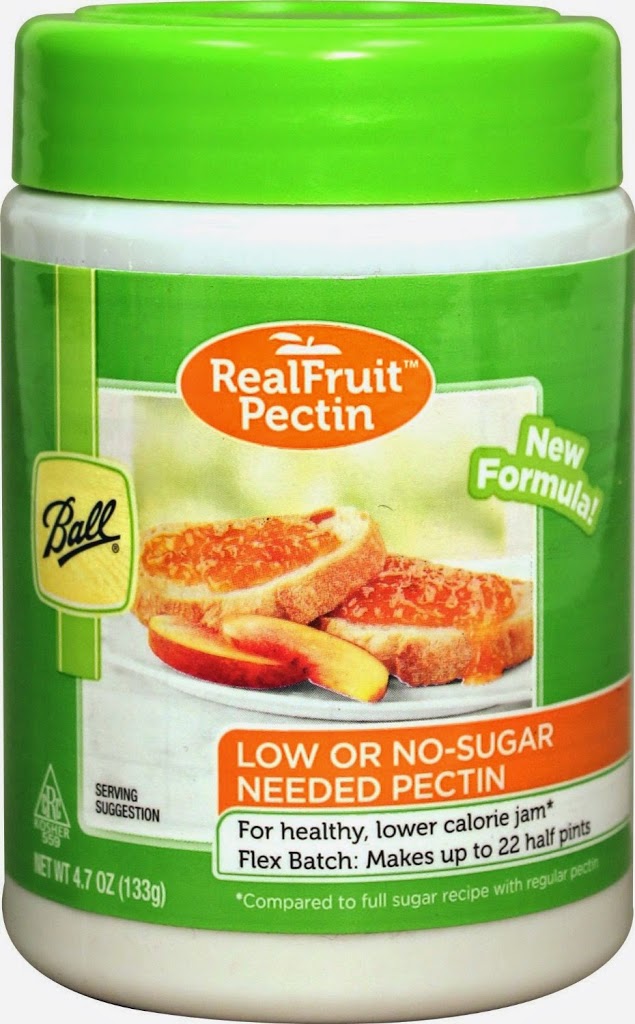 Low-sugar pectin if you want to make a lower-sugar peach jam http://www.amazon.com/gp/product/B004U8R0QA/ref=oh_details_o04_s00_i02?ie=UTF8&psc=1
Low-sugar pectin if you want to make a lower-sugar peach jam http://www.amazon.com/gp/product/B004U8R0QA/ref=oh_details_o04_s00_i02?ie=UTF8&psc=1

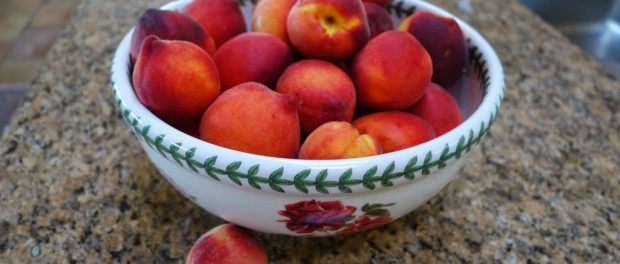
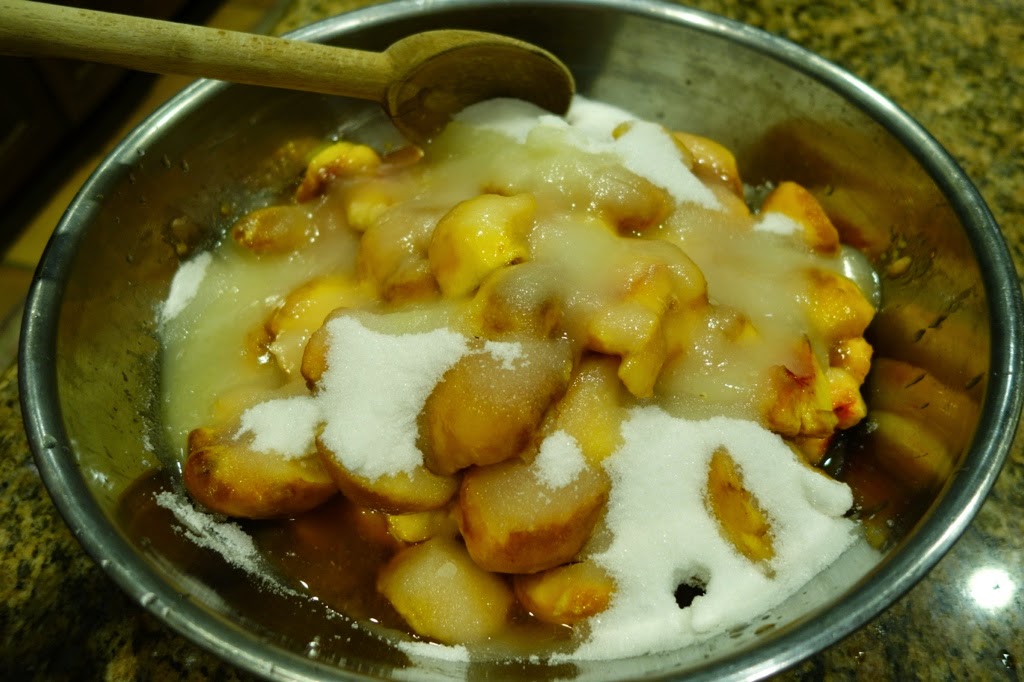
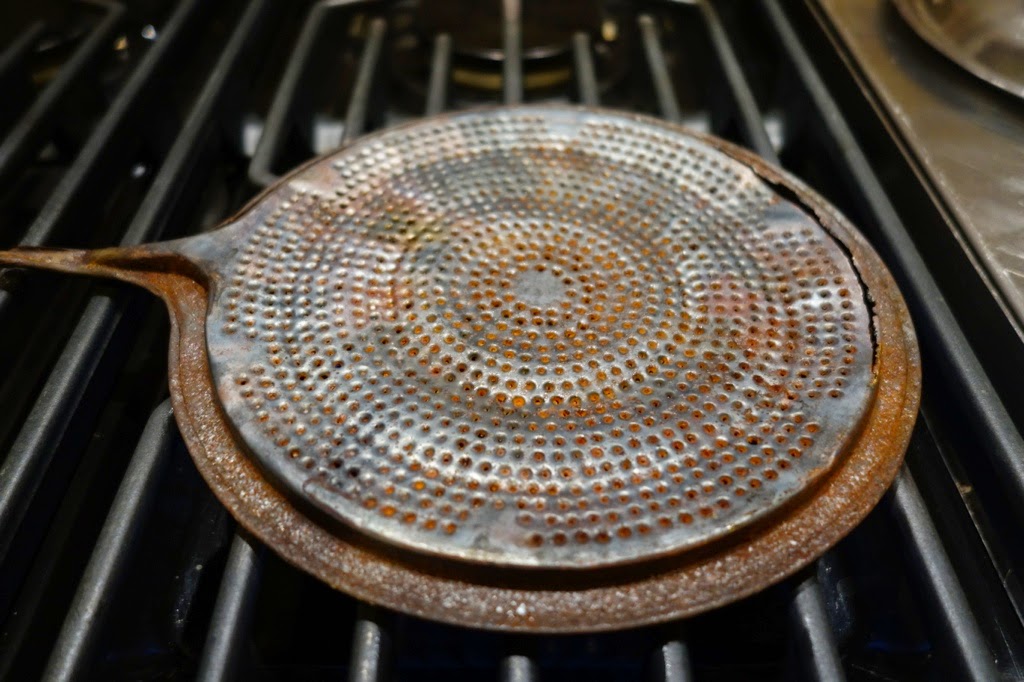
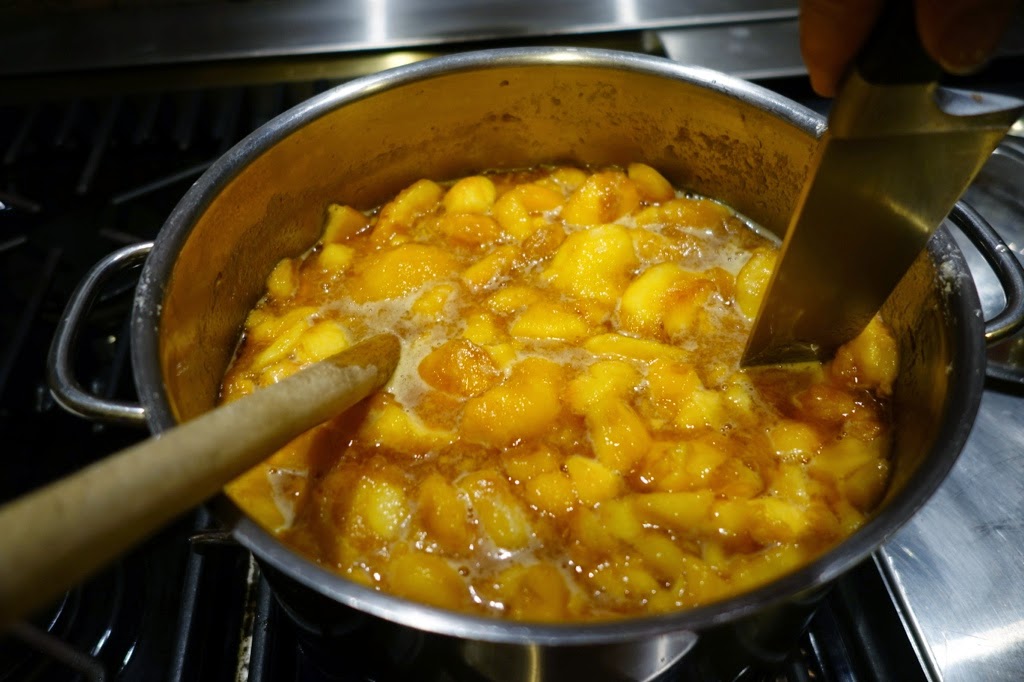
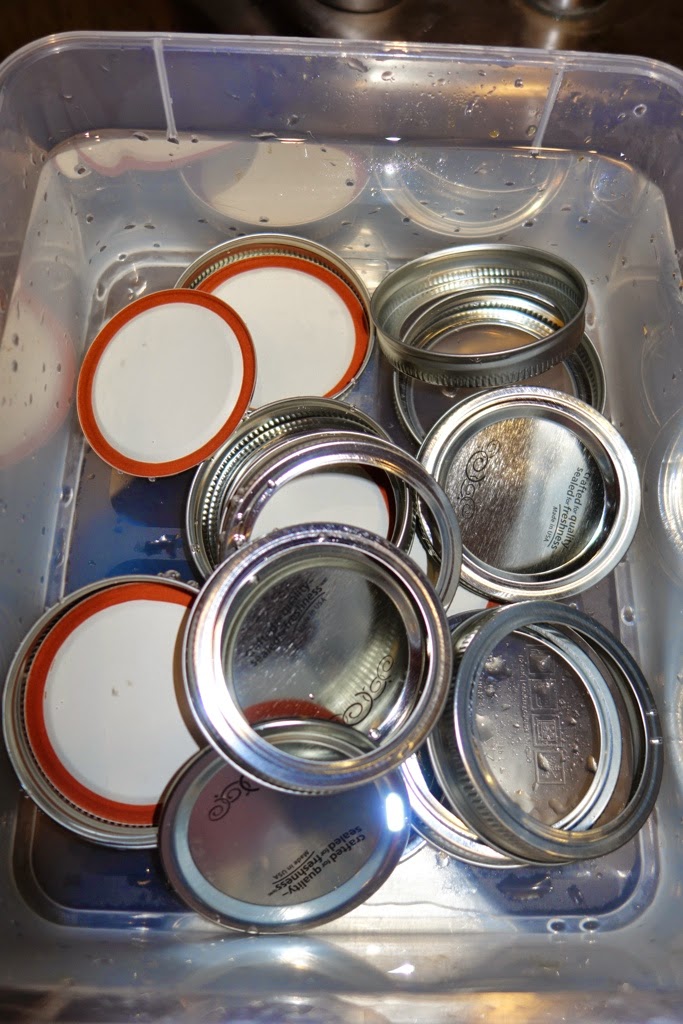
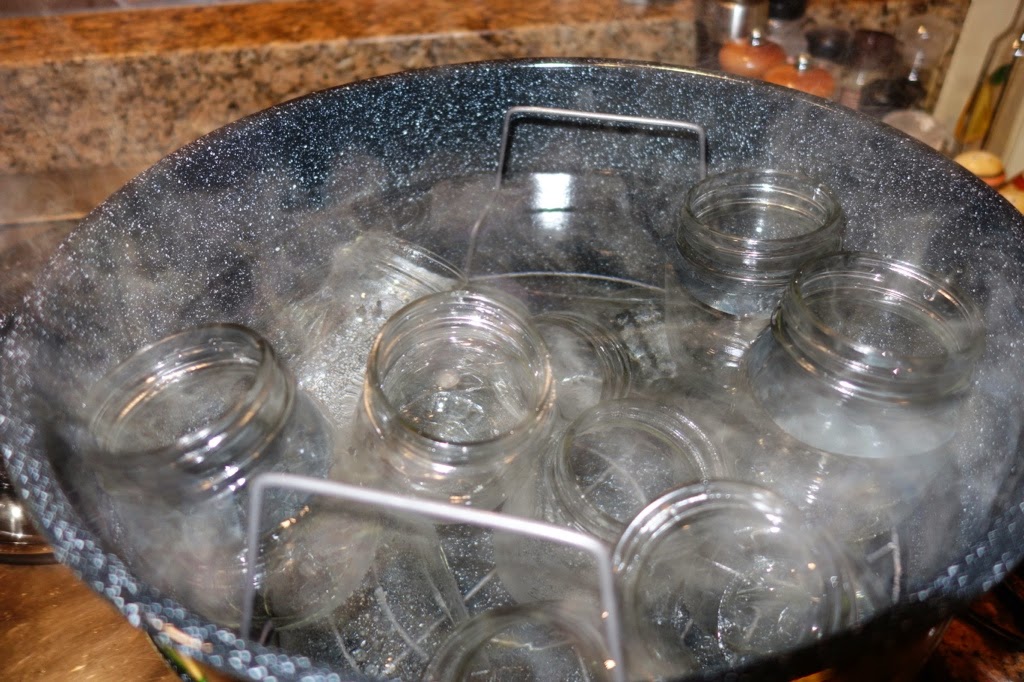
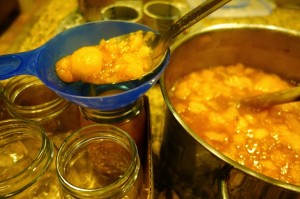

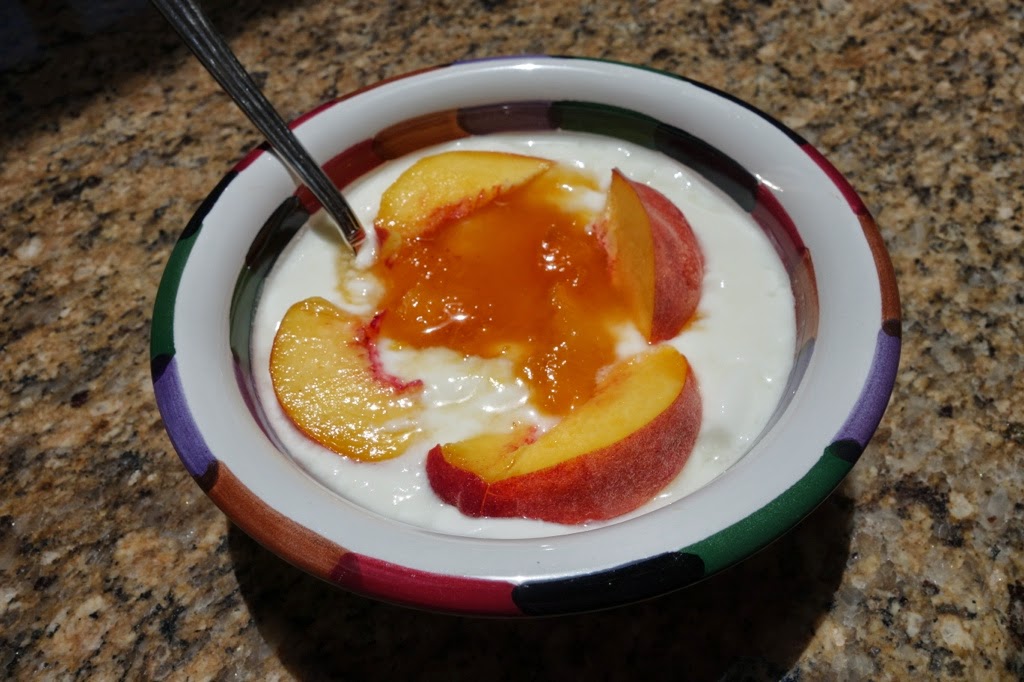
Leave a comment